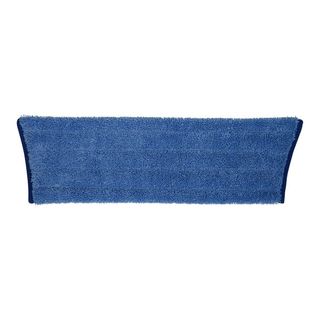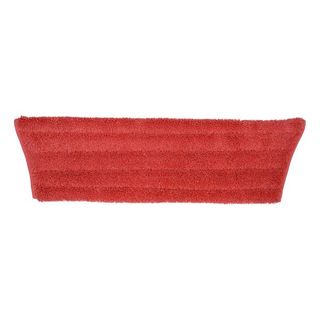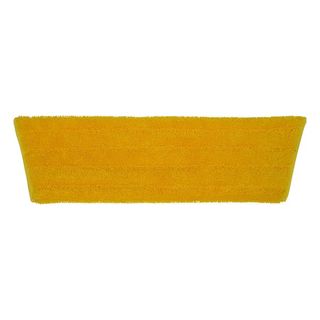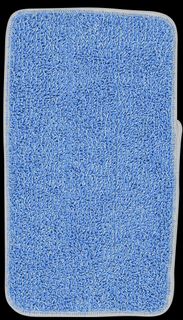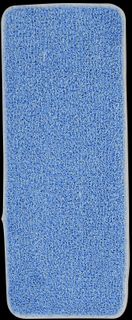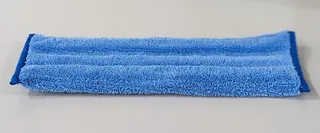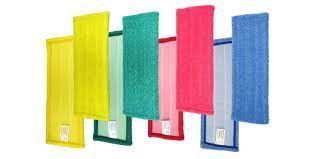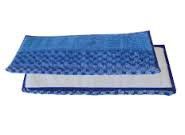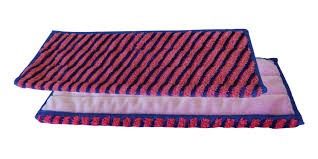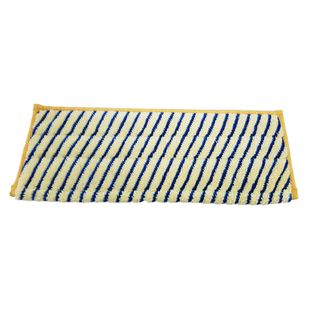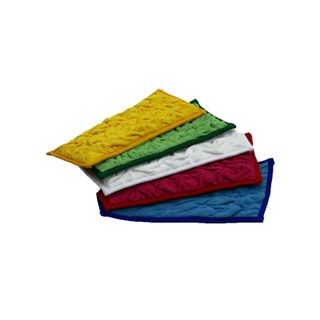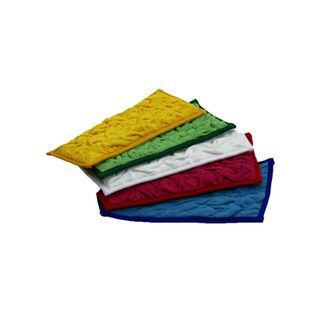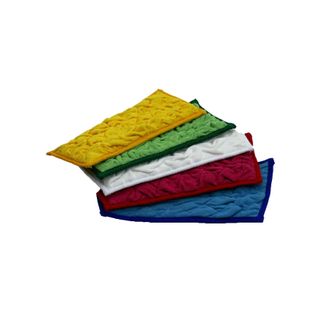Microfibre Pads

Microfibre pads with their fine fibers gather dirt much better than polyester or cotton string mops. When combined with rougher agitation points, the dirt is released from the surface and gathered. String mops progressively get dirtier and less effective as their dirt is released into a bucket, and some taken back out in spite of wringing. Operators rarely empty their buckets of dirty water as frequently as they should. Microfibre mops should not be bleached or tumble dried as that breaks down their structure.
A 400mm pad should hold 120-150ml of water and chemical only, as more than that drenches the floor as it makes contact. So pre-wet the pads in their flat mop bucket, turning pads over to ensure even distribution of liquid. Keep the pads moving in one direction to gather the dirt load, changing them as the pad gets dirty. Anticipate 20-30sqm per pad between changes depending on dirt load.
Chemicals enhance cleaning, so choose a chemical to match the dirt load. Acidic bathroom cleaners remove body fats and soaps. Neutral chemicals are for sensitive floors, timber floors, and general dirt. Alkaline degreaser chemicals remove food and workshop grease. Disinfectant chemicals are for floors like gyms or pre-schools where hand and body contact occurs with floors.
Dx1 is made to last more than 350 washes. Thanks to its range of five colours, it can be allocated by work area or facilitate logistical redistribution within your department.
Blue is for general areas. Red is for bathrooms. Green is for food areas. Yellow is for infection control areas. White is for surgical areas. The colour is carried through into the poles, pads, and buckets.
Sizes range from 350mm, 450mm, and 600mm.
Choose your flat mop holder to suit durability or budget needs.

